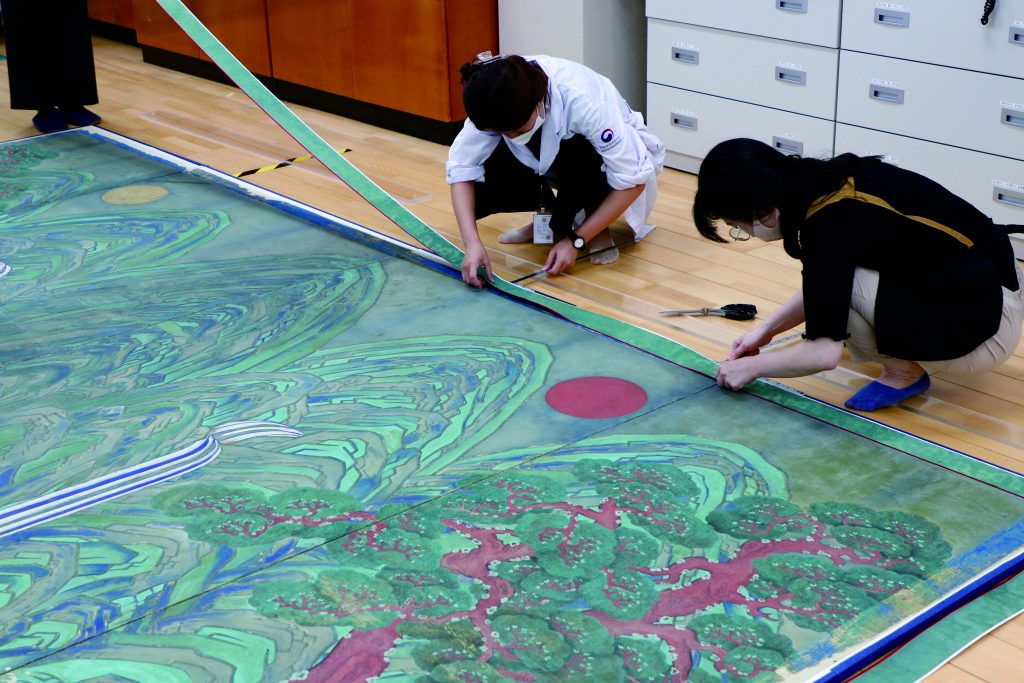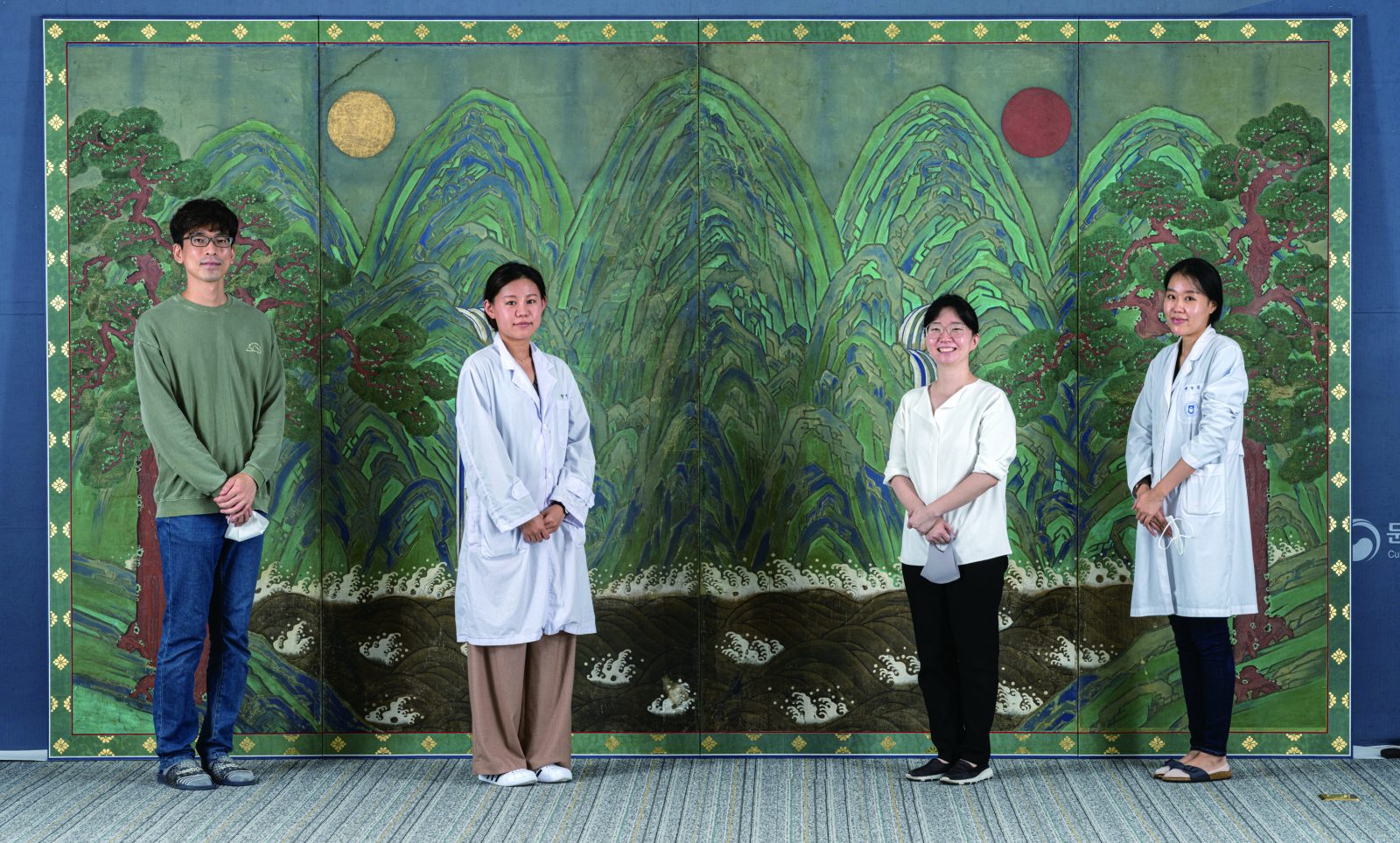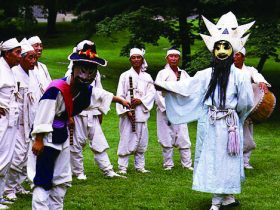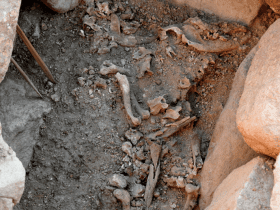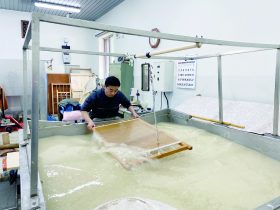Restoration Process of Irworobongdo from Injeongjeon, Changdeokgung Palace
Cultural Heritage Conservation Science Center
JEONG Heewon
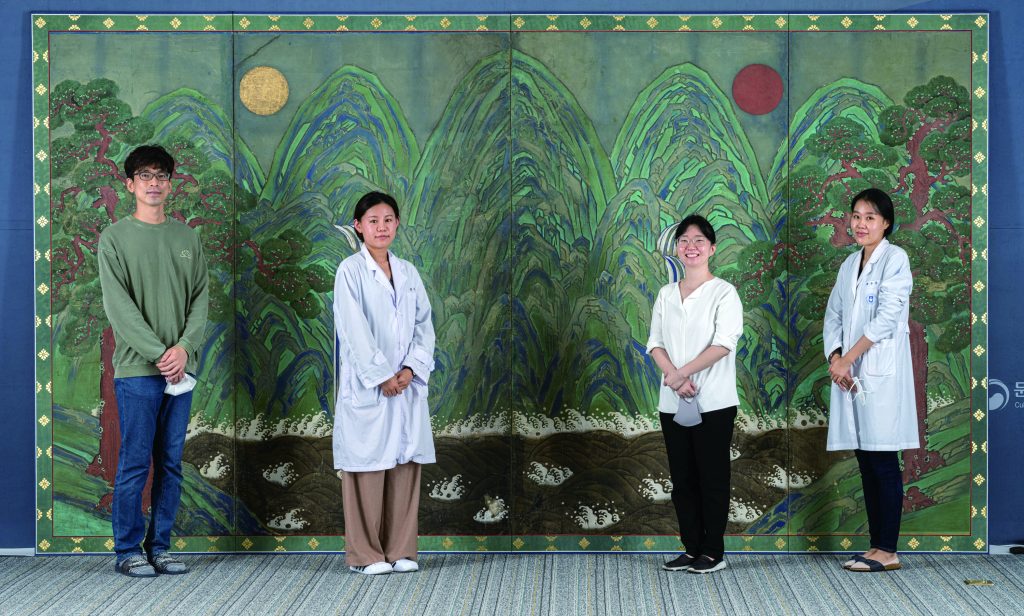

Conserving cultural heritage which bears our history and tradition is an important task. The Cultural Heritage Conservation Science Center under the NRICH puts much effort into protecting the original state of cultural heritage while ensuring them to be well maintained in the future. Restoring damaged and missing parts of artifacts and reinstating them back to their original locations, is one of the most accomplishing moments for conservation scientists, redeeming their hard work. The conservation treatment of Irworobongdo (Painting of the Sun, Moon and Five Peaks) which began in 2015 has been a rewarding project as such.
STEP 1
Damaged Irworobongdo transferred to the NRICH
In December 2015, Irworobongdo with significant damage on the screen and frame was transferred to the National Research Institute of Cultural Heritage. The damage was very serious including exfoliated pigments and torn screen panels. The Irworobongdo was originally placed behind the throne in the Injeongjeon Hall of Changdeokgung Palace. The main building of the second royal palace of the Joseon Dynasty was a poor environment to preserve a silk folding screen since it was exposed to external environmental change. The Cultural Heritage Conservation Science Center checked on the condition of the Irworobongdo and discussed the appropriate conservation treatment method with the Changdeokgung Palace Management Office before starting the process.


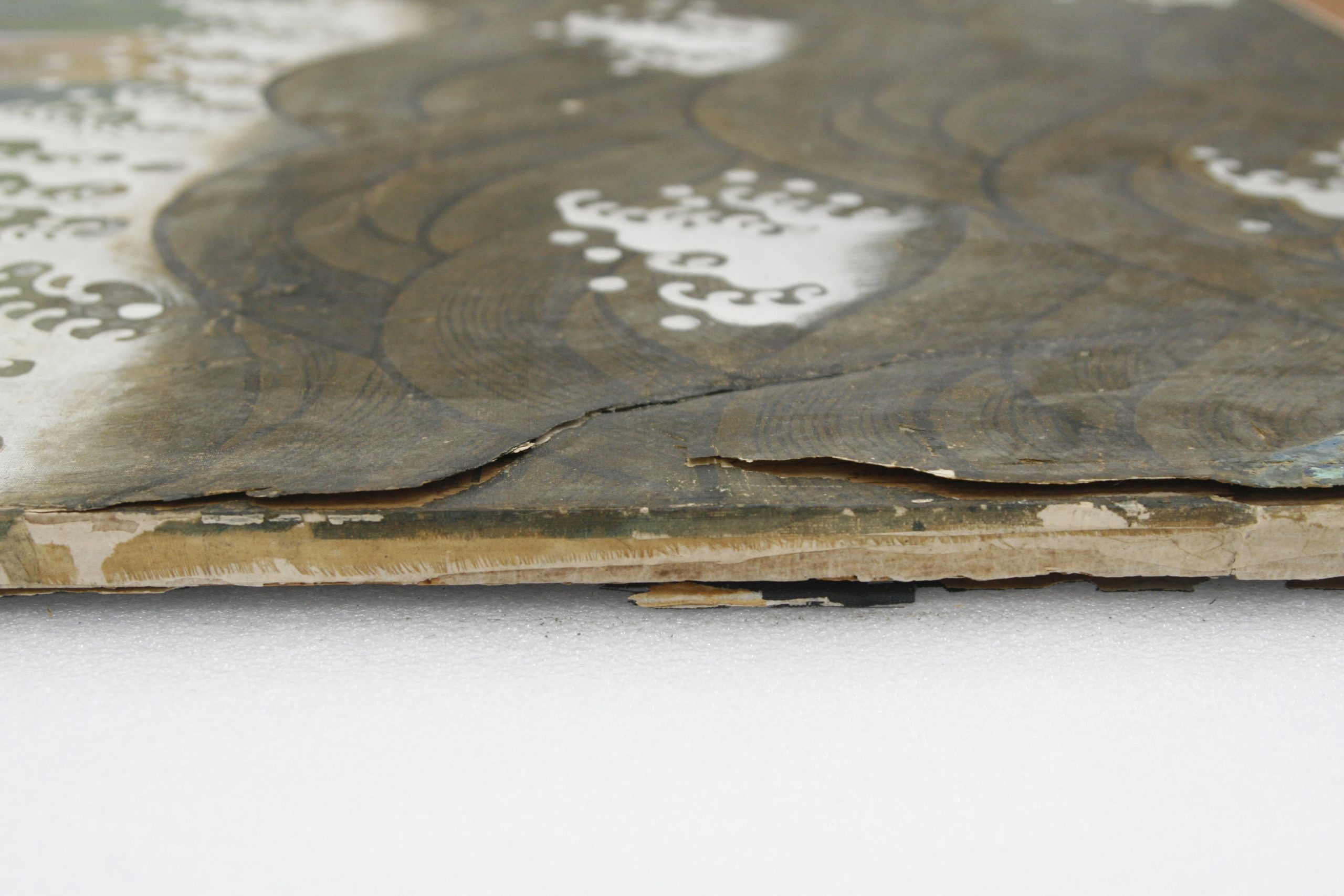

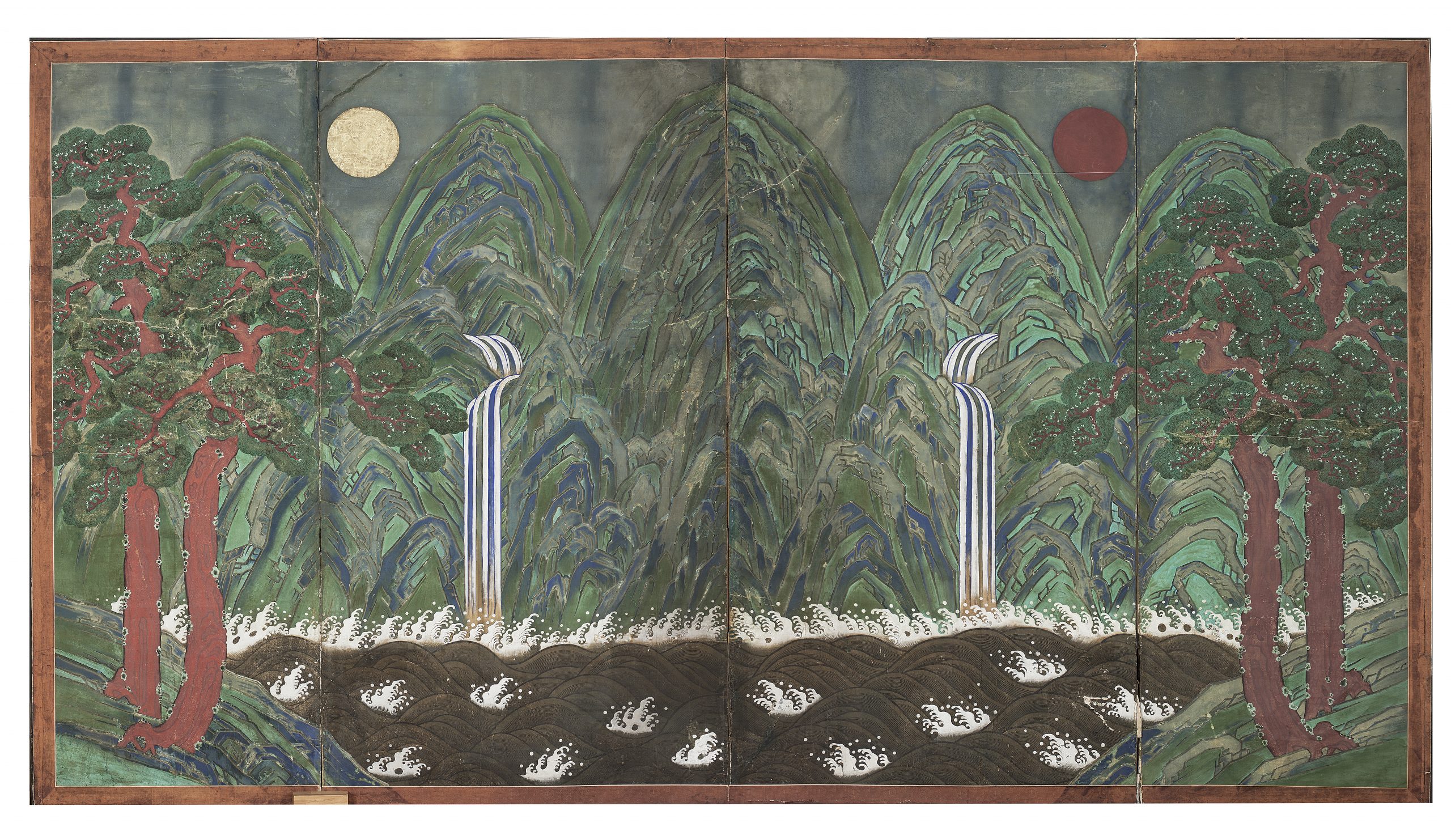

![]() STEP 2
STEP 2
Research on the current state of Irworobongdo
“When we inspected the status of Irworobongdo, there were many damaged parts that were torn or ripped. We had to run a thorough inspection before the conservation treatment could start.”
For conservation treatment, the first thing to do is to identify damage such as tear, loss, stain and peeling-off and classify those by types. Infrared imaging reveals invisible lines and underdrawings beneath the surface painting layer. This preliminary investigation plays a key role in decision making for conservation treatment methods.
“Irworobongdo has been through conservation process in the past. It is possible to confirm
the newly painted-over parts through infrared imaging. Pigments that fill in the lost parts and those that are painted over on original pigments differ in color.”
The material used to make Irworobongdo also has to be identified to fill the torn or damaged and lost part with similar materials. Researchers analyze the fabric, whether it is silk, hemp or ramie, and how it is woven. After inspecting the status and analyzing the material, the conservation treatment plan for the artifact is established before the treatment is actually implemented.


STEP 3
Supplementing over and over


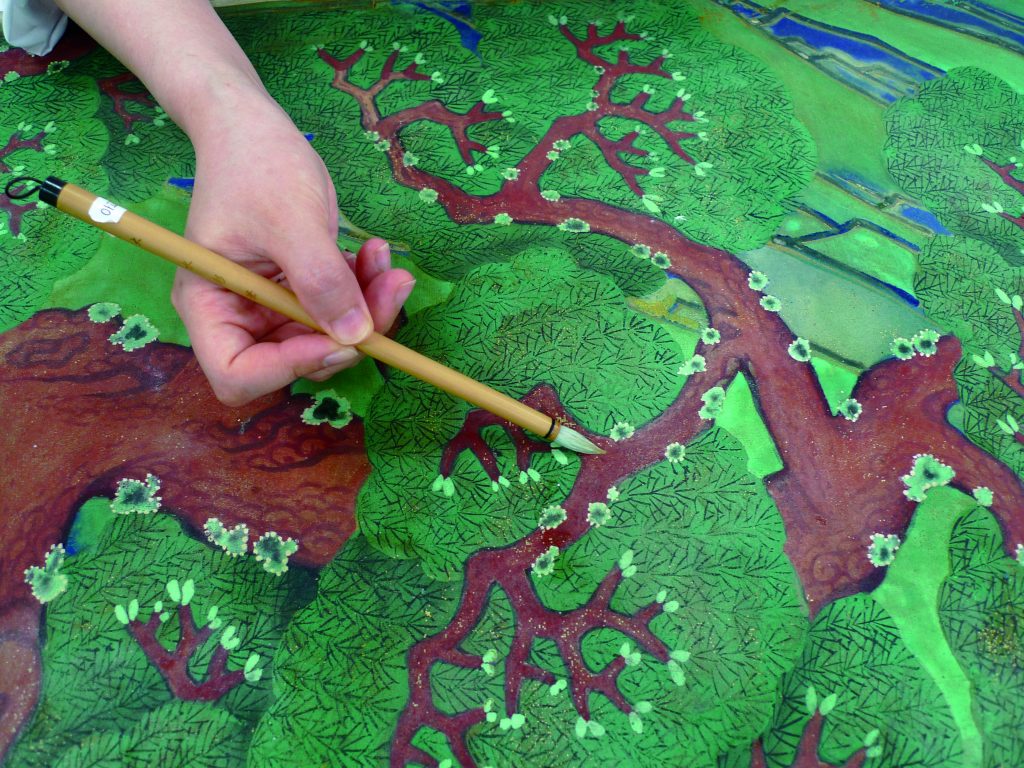

“We have researched in many ways to restore Janghwang (traditional Korean mounting). Sinseonwonjeon Hall of Changdeokgung Palace is where portraits of deceased Joseon kings were enshrined and there is another version of Irworobongdo. We referred to that painting to restore the back of the folding screen. We pasted blue paper with the Buddhist Swastika pattern (卍) on the back of panels 1 and 4 and plain white paper on the back of panels 2 and 3, according to historical evidence.”
After completing these steps, the painting that has been treated is attached to the front of the folding screen. The final step is to decorate the edges of the painting with silk as in traditional Korean mounting. The final adornment is also based on data from Uigwe (Royal Protocols of the Joseon Dynasty), gelatin dry plate and similar artifacts. Green silk with cloud pattern was used for mounting, completed with red and white linings. Silk with flower-patterned gold leaves was applied around the edges of the painting, adding the finishing touch to the conservation treatment.
“Before we start the treatment, we stabilize the pigment which might peel off or exfoliate from the surface. Then we do dry cleaning, by removing contaminants from the surface with a dry brush, and separate each painting from the folding screen frame. Then we go through the wet cleaning process by spraying water to reduce contamination on the surface.”
After removing the surface dust, conservators add a new layer of backing paper called “Baejeobji”, on the back of the painting. In the past, backing paper was used to make the painting thick and durable. Irworobongdo also has multiple layers of backing paper, but over time the old backing paper has deteriorated and peeled off, so a new layer is needed.
“In the front of the painting, there are parts that have fallen off. We restored the lost parts by weaving silk pieces similar to the original painting. Then the restored part is matched with the original texture and color.”
The first and foremost principle of this process is not to restore the unharmed parts of the original. Restored parts should be added in reversible methods so it does not damage the original if removed. The folding screen frame was also too old and dam- aged by insects to be used. A new frame was made from pine- wood with added layers of paper to mount the painting.
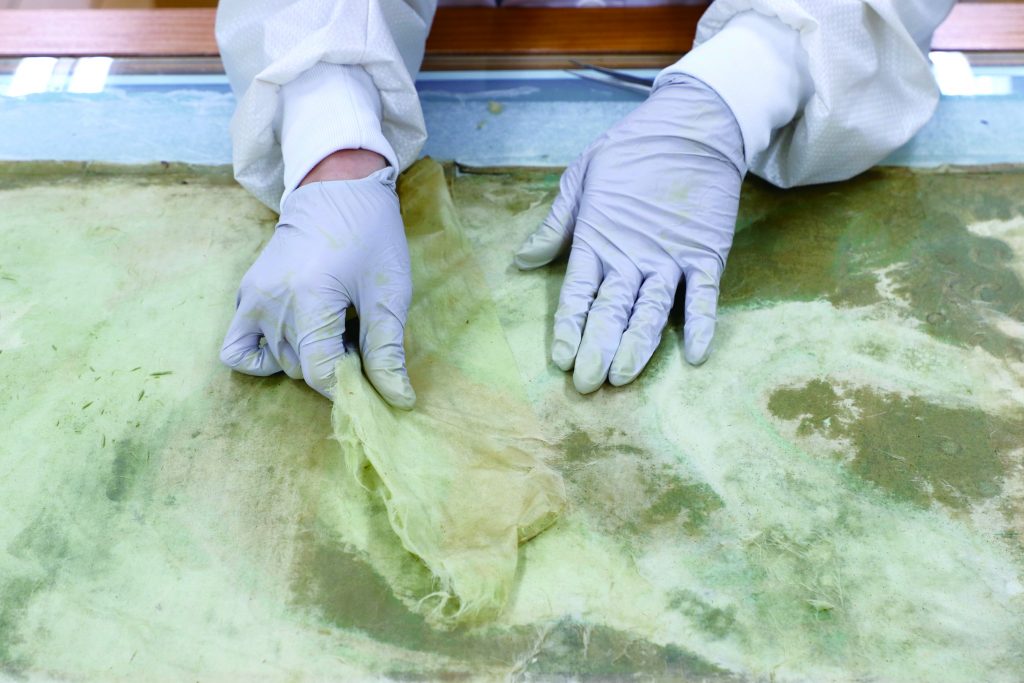

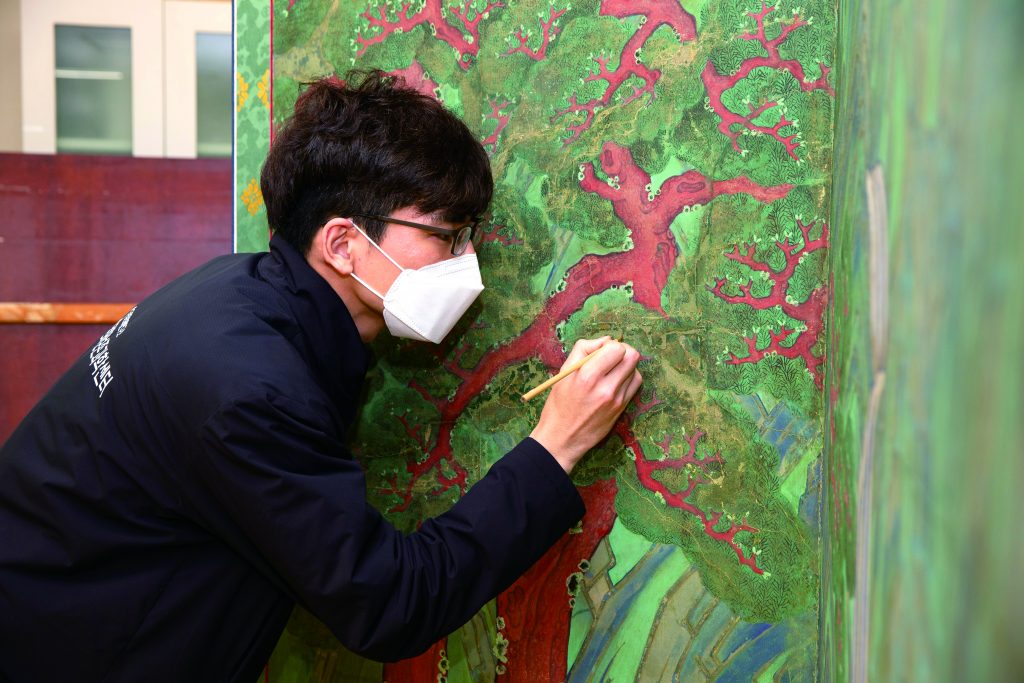

FINAL STEP
Importance of documenting the conservation treatment
An unexpected discovery was made while restoring the Irworobongdo. “When we disassembled the folding screen, we found newspapers from the 1960s and older documents underneath. When we consulted experts to identify those documents, they suggested that the papers were answer sheets of applicants who failed the Gwageo exams (highest-level state examination of the Joseon Dynasty for selecting government officials). It appears that those answer sheets were reused as backing paper. These are now going through more detailed research to estimate the age.”
The conservation treatment of Irworobongdo began in 2015 and has been completed in 2021. However, the task of the Cultural Heritage Conservation Science Center is not yet done. They have to document the results of investigation and research conducted during the restoration and conservation. “Conservation treatment is a moment when we can meet the cultural heritage at the closest. We try to document precious information gained from the encounter and record the conservation methods taken, in as much detail as possible to help future conservation treatment of other artifacts.”
History is told through records. Through records, we meet the past, connect with the present and continue on to the future. We hope the result of this conservation treatment can provide assistance in breathing new life into other cultural heritage.
